



Summer 2007
Didn't get around to do any work on the web page during 2006. Nothing special happened, we were busy with a larger than usual crop. Another year of confirmation that I'm on the right track with my breeding program. A reason was also that I was looking for boats in Asia to sail on during winter months. Eventually found a yacht, but that's another story..
2007 started early. 2 weeks earlier than what I would regard as "normal" here. And I had to jump into work with bees too fast after coming back from winter quarters in Thailand...

May 19, autumn sawn oil seed is flowering. The first real crop coming in.
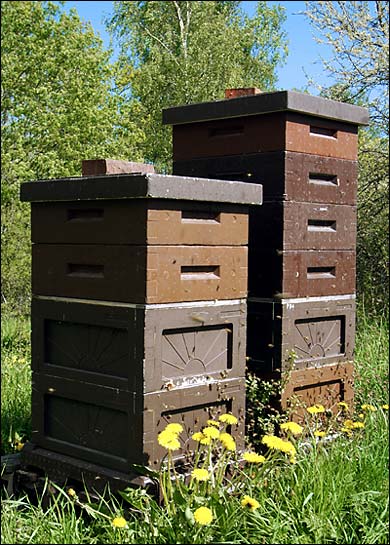 |
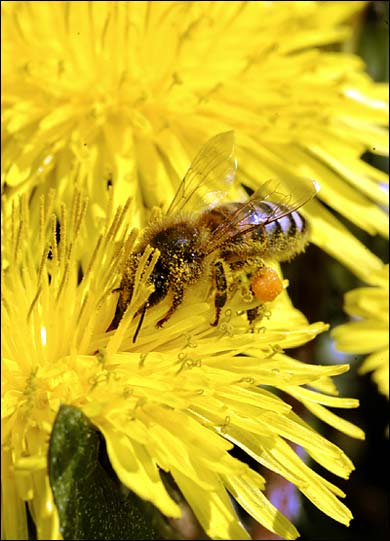 |
| Hives are not so strong yet. | Some years dandelions can produce honey if weather permit in spring. |
![]()
After lots of talk on BEE-L about small cells and their possible benefits I decided to try myself. Didn't have the time to go through the downsizing procedure some of the proponents claim is necessary. I inserted one frame with 4,9 mm cells early in spring in the middle of brood nest in each hive, and let the bees draw them out. This is supposed to work according to some. I expected them to make a mess of some cells, but not totally rebuild all. Of the 12 hives I used in this small test, only one made some effort to build and use 4,9 cells. Even this hive didn't draw out all cells properly. The strange thing is that after the bees made such a mess of it with different cells, the queen refused to lay eggs in them! Those frames (I had 3-4 in each hive before I gave up) were left empty in the middle of the hives through summer. A few cells filled with pollen, a handful of drones, but except that nothing. When we entered August and winter came near they started filling them with honey.

I didn't give up that easly. When feeding for winter I moved all brood frames down to bottom box and gave them a full box of 4,9 foundation above. With 30 litres of sugar to bring down, one thinks they shouldn't have time to mess around with cell sizes... I was wrong, they made the same mess of it again.
![]()
Queen rearing is an important part of summer work. I use 3 frame mini hives that are started with a cup of bees and a hatched out queen. The small mini nucs are suitable for our situation. We get 2-3 queens out of every nuc, then the season is ended. If we would try to keep them longer they would grow too full of bees and be difficult to manage.
In a situation with longer summer I would use nucs made of 3 std frames instead, so I could take frames out to reduce strength when needed and use the extra bees in production hives. But with our short summer, this works best as we don't have to cut production hives back when taking bees from them in spring.
|
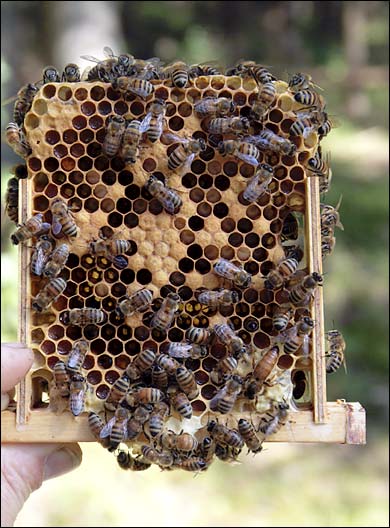 |
| Caging queens in nucs. | Frame in mini nuc. |
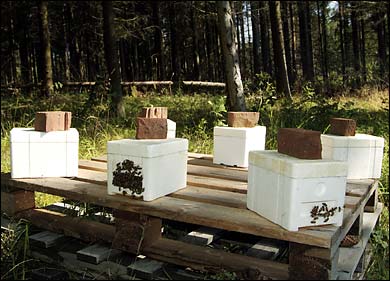 |
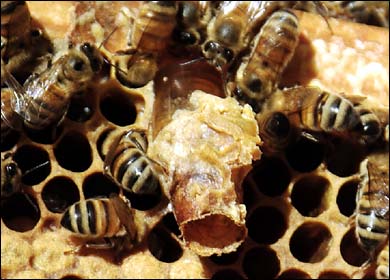 |
| Getting crowded in August. | She hatched out OK. |
When a mated queen is taken from the nuc, a ripe cell is introduced that will hatch in a few days. With good weather the queen can be mated 2 weeks after hatching. Queens are changed in the production hives during summer as they get mated. We look up 50 to 80 queens a day, spending about one week on requeening every summer. About 60% of the hives get requeened, 2 year old and those not performing well from last year.
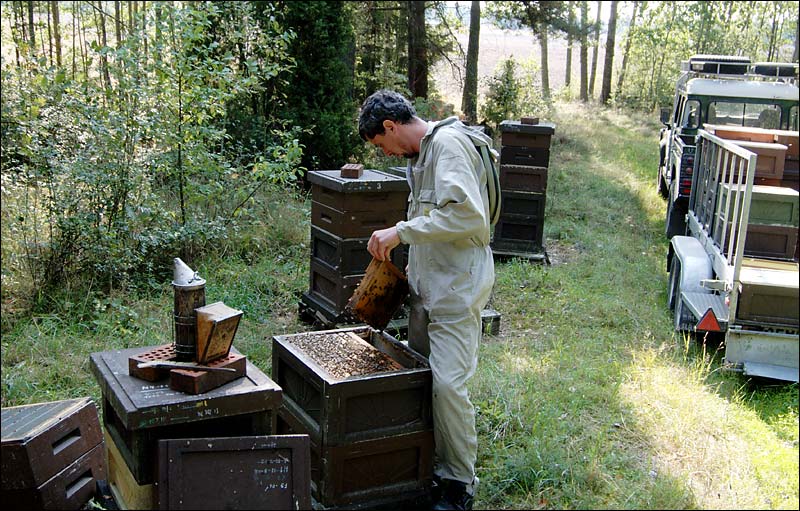
Bad frames are marked and moved to the side of the box when we go through hives in spring inspection and for requeening. When possible they are taken out and brought home for cleaning and new foundation. Last honey is taken off here, and hives prepared for feeding.
A clip showing when feeders goes on.
Another clip looking for a queen to be changed.
Preparation of winter feed. It's done with white highly refined sugar.
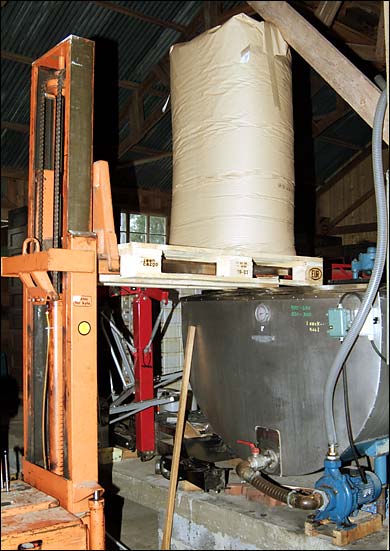 |
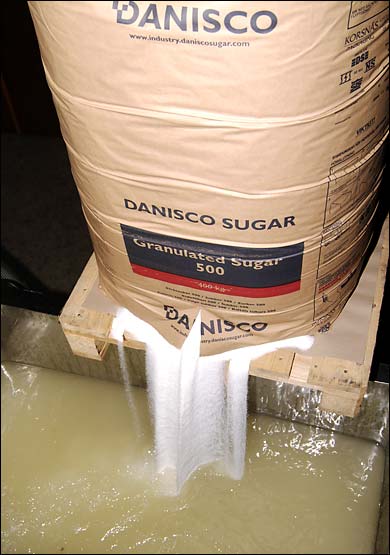 |
| Sugar mixed with water in 3:2 ratio. | Each bag holds 400 kg. |

Honey supers are stored during winter. Everything is kept on pallets for ease of handeling.




